What Does An AED Do To The Heart?
- Nov 25, 2019

Many people know what an Automated External Defibrillator (AED) is, but not necessarily how it works.
When AED pads are attached to a person’s chest, the AED immediately analyzes whether that person’s heart is in a cardiac arrhythmia. The main two arrhythmias that will prompt an AED to shock are Ventricular Tachycardia (V-Tach) and Ventricular Fibrillation (V-Fib). In both arrhythmias, the heart acts erratically and cannot adequately pump blood to the brain and extremities of the body. If the heart is in any other state, even not beating, the AED will not produce a shock.
When a shockable rythm is detected, the AED’s battery charges its capacitors in preparation to shock anywhere from 150 to 360 Joules. To give you an idea of this power, one joule is approximately the energy released when an apple hits the ground from a one meter drop. This shock depolarizes the heart muscle and eliminates the fatal arrythmia by completely stopping the heart altogether. After the heart has stopped, it has the amazing ability to reset its natural pacemaker and begin beating normally again.





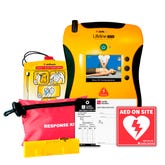
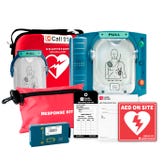

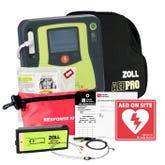
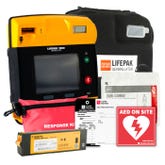
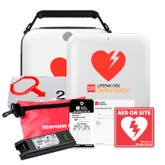
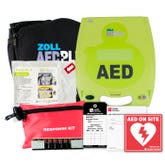
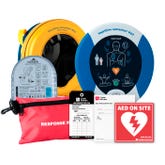
 CALL US:
CALL US: